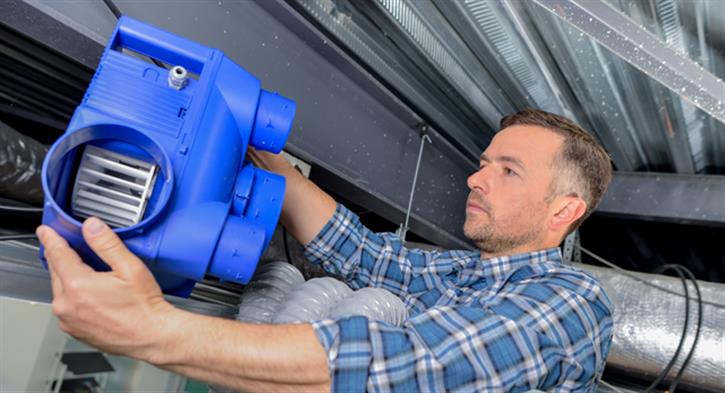

Maxine Easingwood discusses the considerations to be made when installing heating and cooling units in existing buildings.
Construction projects and fixtures in existing buildings have limitations that need to be taken into consideration. When fitting equipment, such as air conditioning units, it is vital to ensure that they are carefully installed in manners that allow not only for the satisfaction of the client’s requirements but also preserve the integrity of the building’s structure.
Seemingly simple alterations can affect anything from a building’s durability and overall aesthetics to the way it is perceived by future generations; the latter being particularly applicable when conducting work within a listed building.
Protected Buildings
The Ancient Monuments Protection Act of 1882 was the first legislation of its kind to instil measures that would guarantee the preservation of buildings with historical value. Any alteration to existing buildings needs to be carefully considered, especially if the buildings are protected. Ensuring that listed buildings’ original structure is preserved can be a challenge when installing bigger fixtures such as lifts.
Other influences can lead to cultural impacts that reflect positively on the building’s owners, as tourism can rely on the preservation of façades and other elements of properties that aren’t necessarily listed buildings. The intrinsic value of these properties resonate within communities, attracting cultural events that stimulate the local economy as they celebrate the town’s history and aesthetic.
The Buildings’ Materials
In addition to the aesthetic features of a property, factors such as the building’s location will have an impact on any changes. Buildings are designed factoring in influences from the surrounding environment, and all construction decisions consider structural integrity on a long-term capacity.
For buildings located on the coast, for example, the considerations of the exterior installation are mainly related to the possibility of corrosion from sea salt, but high winds and other weather conditions must all be considered.
Environmental Impact
The preservation of the properties in which units are installed also provides lower downtime for clients, as the fabric of the building is left untouched and future maintenance can be easily carried out. It also means minimal waste management and environmental damage, with little construction waste. In 2012, the UK generated approximately 100 million tonnes of construction waste, which introduces highly toxic materials into the environment. By installing a unit that sits with the architecture of a building, the structure is preserved and the preceding energy involved in all aspects of manufacturing and building is maintained.
Through installations that are seamlessly incorporated into buildings, such as with the installation of evaporative cooling systems, it is possible to minimise direct effects on the structure that may lead to their deterioration. Businesses also benefit from being in older buildings that are properly maintained and preserved, as it can bring economic value and an increase in business.
By protecting the architecture of the premises in which installations occur, you will be showcasing experience through expert installation that minimises the impact on buildings. You highlight knowledge and problem solving that assure both current and potential clients of your ability to undertake any project, particularly ones that guarantee the integrity of properties.
Maxine Easingwood is the owner of Heritage Heating and Cooling
Image courtesy of Shutterstock/Phovoir
If you'd like to keep up-to-date with the latest developments in the heating and plumbing industry, why not subscribe to our weekly newsletters? Just click the button below and you can ensure all the latest industry news and new product information lands in your inbox every week.